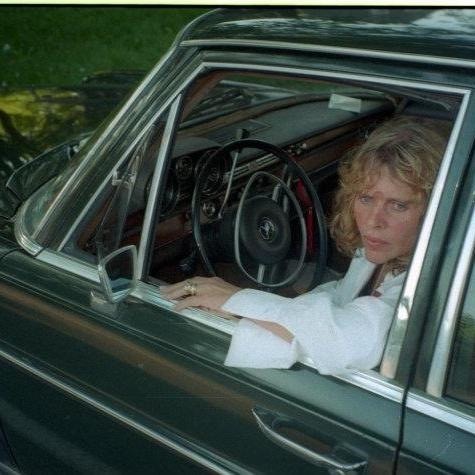
Pamela Willoughby, photographed in 2002 by Dennis Murphy (photograph courtesy of Pamela Willoughby)
Brushing shoulders with the most influential people in the turbulent New York art world of the 80s, Pamela Willoughby, as an eminence grise within the Manhattan scene, experienced it at its subversive peak. Eccentric neighbours, a captivating graffiti coat, booze-heavy Penne a la Vodka and a hot tub in the back of a sports car remain stingingly acute in her memory, as do spaces filled by the hot artists of the time, from Warhol to Basquiat.Talking to LUX Chief Contributing Editor Maryam Eisler, she recounts the diversity of experiences and people that she encountered, reminiscing on the eclectic nature of the city. Now, she maintains her artistic passions as a consultant and curator in her home in the Hamptons
Maryam Eisler: Pamela, how did New York enter your life?
Pamela Willoughby: I left Malibu after many trips to New York City. It was full of musicians, surfers, and stars but I was interested in art. So was New York City. At first I stayed uptown at the Parker Meridian, and I’d go to the Russian Tea Room and Le Relais. Not right, so I moved to the Chelsea Hotel.
ME: When did you start going to the Chelsea?
PW: I think it was later in the 80’s.
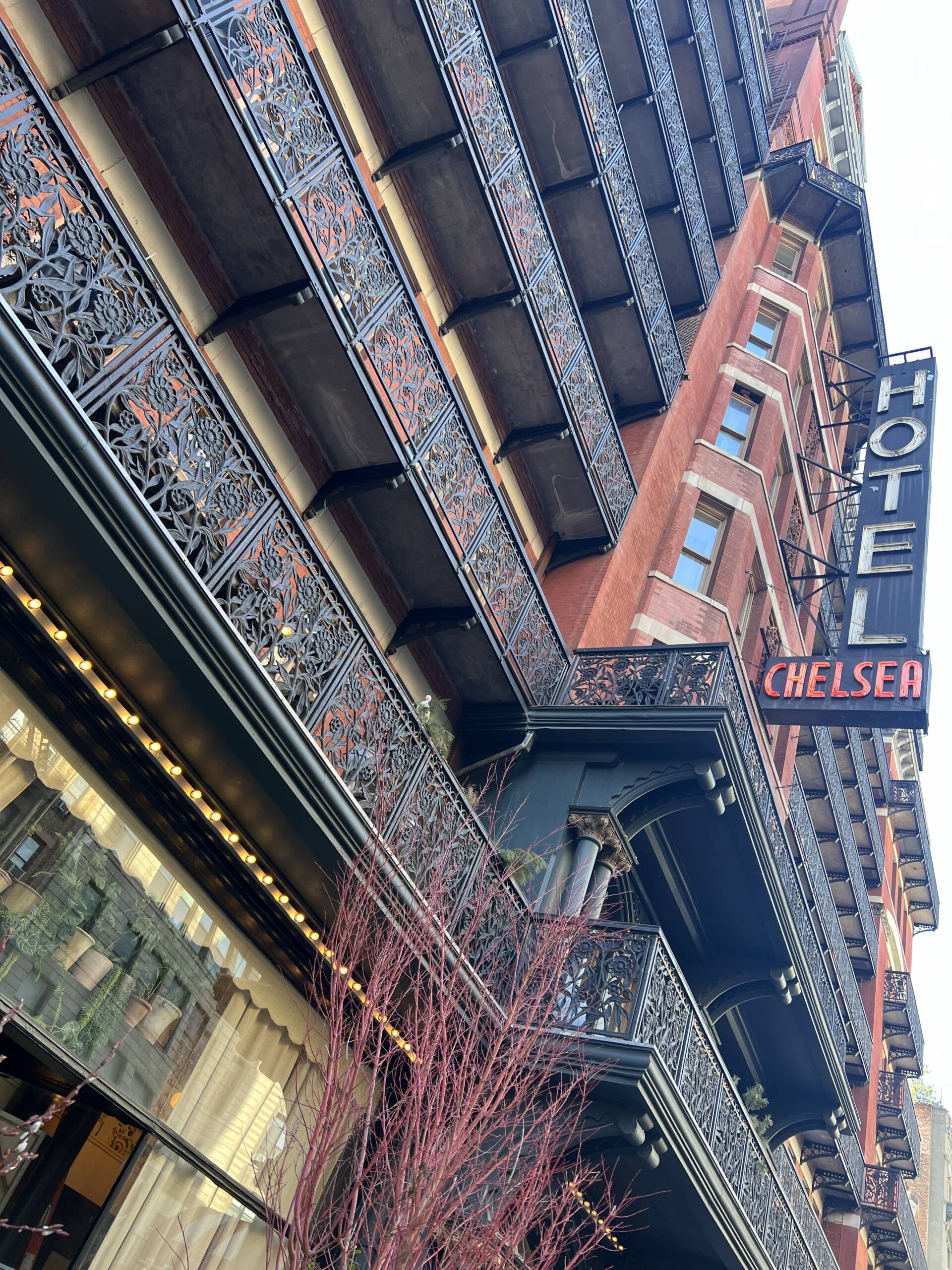
The outside of Chelsea Hotel (photograph courtesy of Maryam Eisler)
ME: The Chelsea Hotel, an iconic location par excellence. Describe the mood at the Chelsea.
PW: It was very fun-serious.
ME: Who else lived there?
PW: George Kleinsinger, the Broadway playwright. His wife, Susan, had a small zoo in the apartment, snakes, turtles, birds, a garden on the roof with sunflowers, all flowers and many butterflies. Arthur played piano, and the music would fill the air. That’s just a little bit of what was going on. Berthold Brecht’s son and Viva the actress, writer and former Warhol superstar. Larry Rivers had revolving paintings in the lobby. Gregory Corso’s girlfriend Peggy. Virgil Thomson and his grand apartment, always holding court at El Quixote, the hotel’s Basque restaurant.
Richard Bernstein, whose technicolour work graced the covers of Interview Magazine resided on the first floor. Richard and I became close; we took walks around the corner to visit an old Irish bar. Being in the Chelsea, one would never know who would pop in, besides the old timers. Victor Hugo, Halston’s lover was a regular. Susanne Bartsch moved in shortly after I did, from Switzerland.

A family portrait of Gaby Hoffmann being held by her mother Viva in the Chelsea Hotel, by Claudio Edinger (photograph courtesy of Arthur.io)
ME: So, you were taken in immediately by this creative community?
PW: Happily.
ME: Tell me about your nights out on the town.
Read more: The Future of Philanthropy with UBS
PW: Susanne Bartsch had the chic clothing store in Soho on Thompson Street and I went crazy dressing in them. She took me out at first: ‘Darling, don’t bring any money with you, haven’t you heard of drink tickets?’ She had amazing clothes from an Englishman, Richard Torry, an iconoclastic designer at Vivienne Westwood. And after, he started his own label for Susanne.
My hair was down to my waist, hair extensions with gorgeous rags, wearing Richard’s dresses/ cashmere and suede – beautiful, outrageous things. Avant-garde performer, Susanne’s friend, Leigh Bowery would visit from London with his boyfriend Trojan, and we would all go out. Leigh was the quintessential example of pure flawlessness.
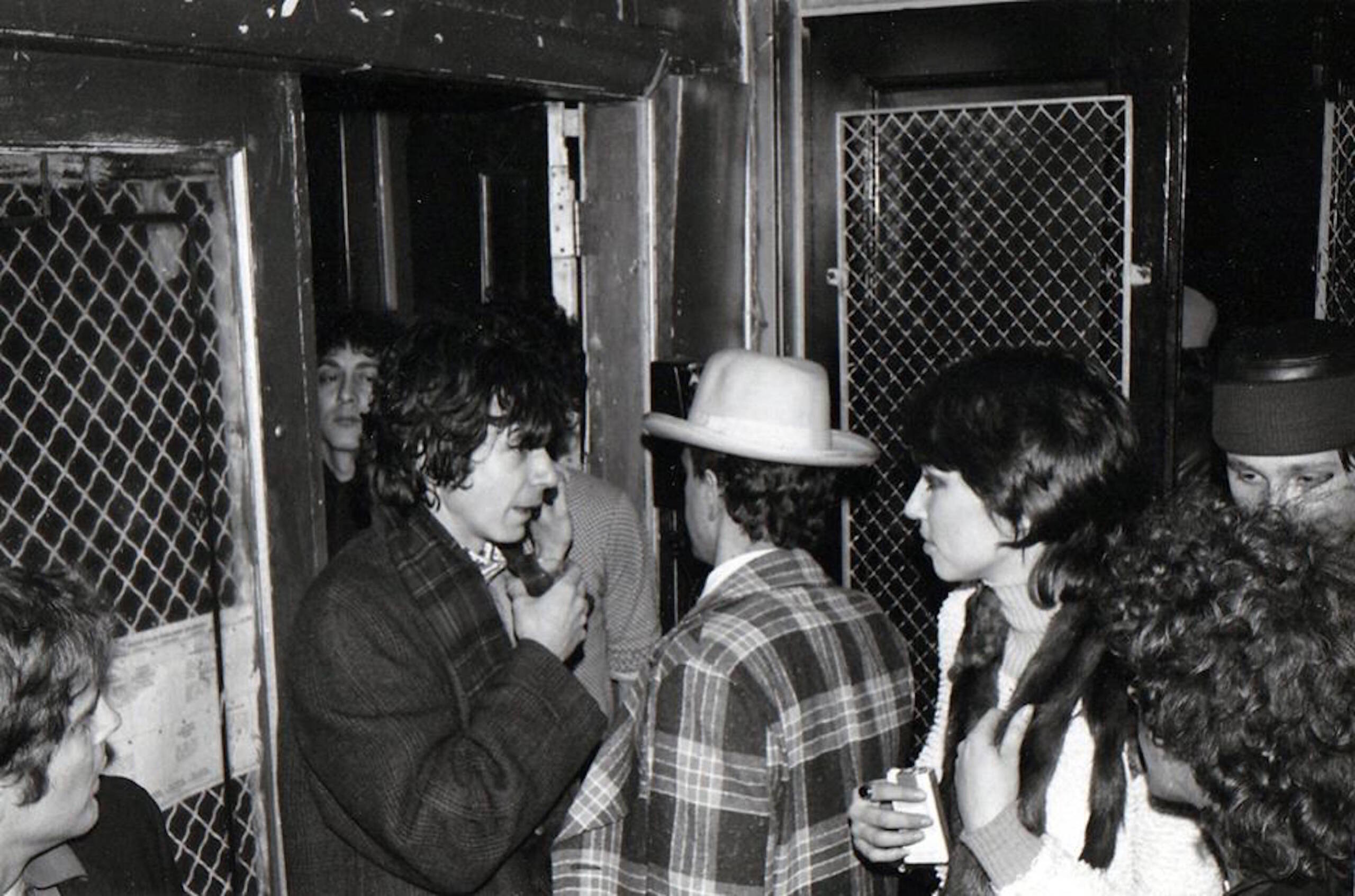
Richard Boch and Steve Mass, Mudd Club door in the 1980s (photograph courtesy of Richard Boch)
ME: Where were your favourite hangouts in the early 80s?
PW: Lots, The Odeon, Raoul’s….some clubs, here’s a story of one:
After meeting the infamous writer Jerzy Kosiński, he asked me to join him at the Mudd Club. So I asked Viva, a confidante, if it was a good idea and she strongly advised no. I asked her, ‘why not?’. She replied ‘He’s very naughty…’. Curiosity got the best of me. I went very late, loving the club, and took a liking to Jerzy – who was in big trouble at the time.
The Mudd Club, founded by Steve Mass, Diego Cortez and Anya, was the most cavernous space I’d ever seen. It was giant and legendary. Anita Sarko was the DJ in the VIP room, one of the first women DJs to hit the scene. Richard Boch was the doorman, and he was fabulous! Richard has chronicled this iconic nightclub in his book The Mudd Club. I also tip my hat to Kenny Kenny, Englishman and doorman par excellence.

Max Blagg reciting poetry with Ethyl Eichelberger at the Mudd Club (photograph courtesy of Max Blagg)
ME: Area was the other iconic club- the perfect confluence of style, music and art. I remember it well.
PW: Yes, Andy Warhol, Jean-Michel Basquiat, Keith Haring, Bianca, Madonna, Jelly Bean Benitez… they were all there, and some participated in the installations, one being the iconic ART, (1985) which shaped a part of my being – it was work by Warhol, Basquiat, Haring behind glass, (as I remember), down a corridor as you entered.
Everyone in the world seemed famous. Everyone who was anyone was there, all up to complete mischief, much of it taking place in the bathrooms. It’s said Area’s inspiration was partly the Dadaism movement.
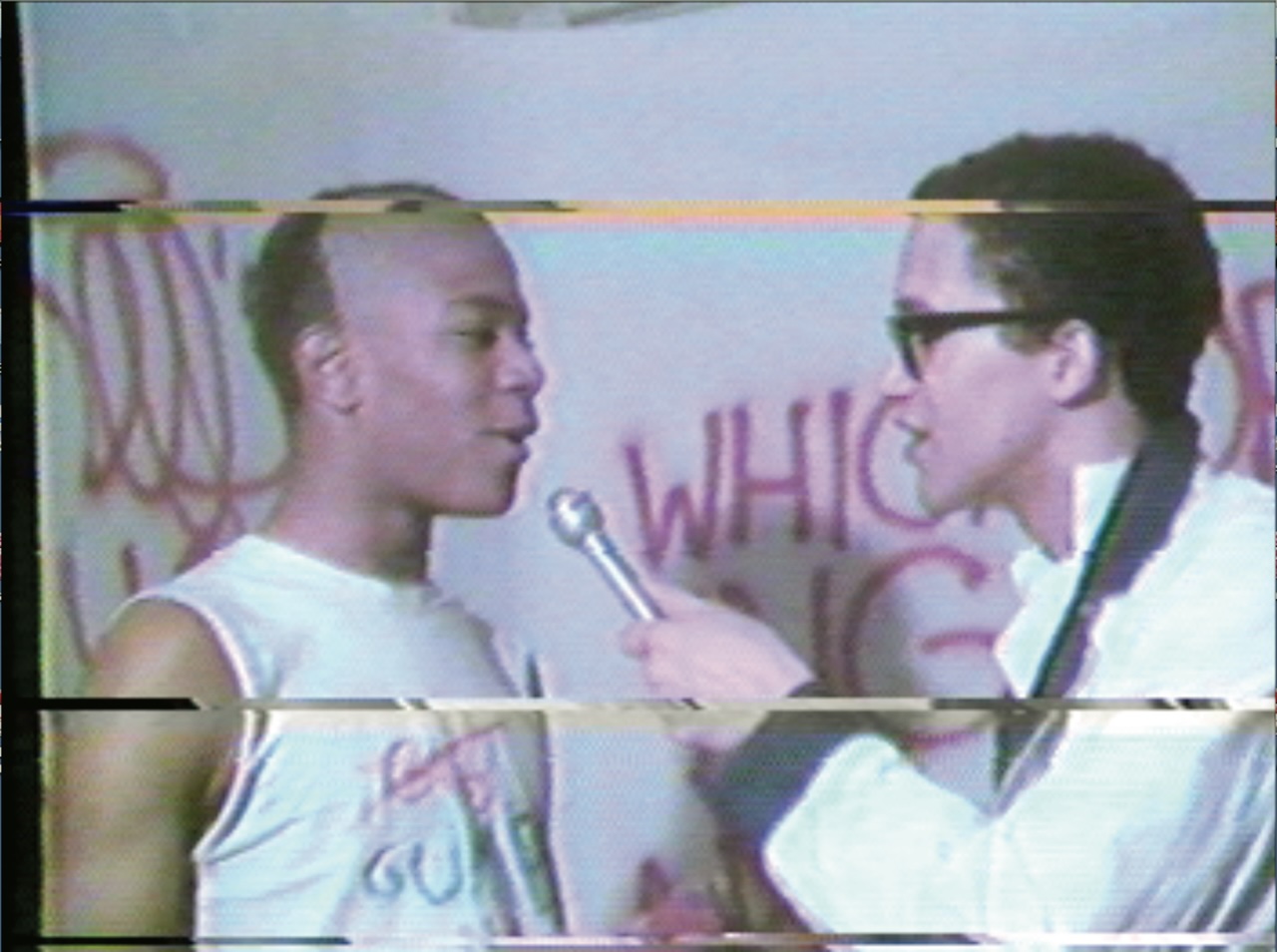
Jean-Michel Basquiat and Michael Holman at Canal Zone in NYC (photograph courtesy of Michael Holman)
ME: The galleries?
PW: Sonnabend, the Jeff Koons show, Banality –1988 / a white and gold porcelain Michael Jackson with Bubbles as one of the works, the Pink Panther… Mary Boone was across the street, after leaving Leo Castelli. Mary showed Jean-Michel after he left Annina Nosei. Julian Schnabel and Eric Fischl were also greats at her gallery.
ME: What about the Lower East Side? It’s so gentrified today but, in those days, I remember drugs and syringes everywhere, but the cool venues.
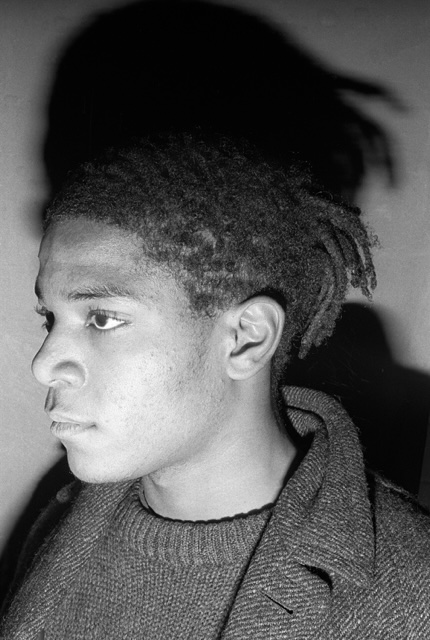
Jean-Michel Basquiat in New York City 1979 (photograph by Marcia Resnick)
PW: Everywhere! I took daily walks from the Chelsea to dream, be inspired by the graffiti and endless energy. I wore a long black leather coat and artists started using a sharpie to tag my coat. Haring, Scharf, Diaz, Basquiat. [Avenues] A, B, C & D.
ME: Is this how you got into the ‘inner circle’ by becoming a part of the scene?
PW: Maybe. I met Patti Astor of the Fun Gallery and just knew about other gallery openings.
While walking on West Broadway in that art covered leather coat one day, Warhol and William Burroughs, pointed me out, inviting me to meet them at Area the same night. That was pretty crazy.
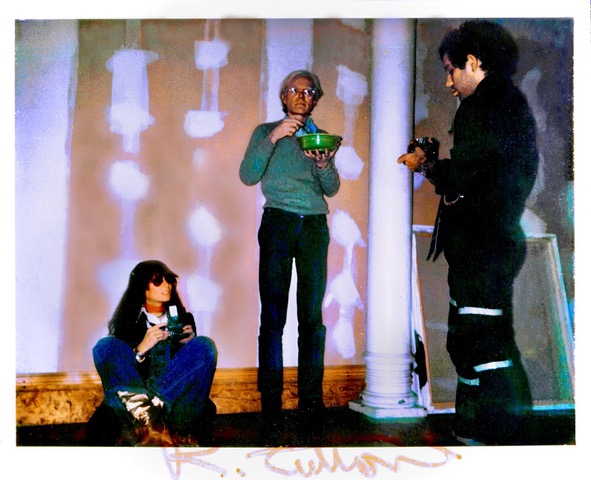
Polaroid of Marcia Resnick, Andy Warhol, and Bobby Grossman at the Factory (photograph by Ronnie Cutrone)
ME: They just noticed you on the street? You had never met before?
PW: I’d never met them before…the right place at the right time, anything could happen those days.
Follow LUX on Instagram @luxthemagazine
ME: Any other places?
PW: The Red Bar was a place I just had to go to. Rockets Redglare was the notorious and wonderful doorman character. The owner, Ralph, was from Vienna and a true innovator. One night he announced: ‘Andy Warhol is going to come and film – you have got to come, the next night is rehearsal’. I found a little white leather mini skirt and a short white fur coat, (we could do that then, apologies!) put on my Thierry Mugler heels and left for The Red Bar. We never saw Andy. He came incognito and filmed us, or somebody did. I was three sheets to a windstorm, because Ralph had been plying me with drinks. And all of a sudden, people saw it on his cable TV show 15 minutes. ‘Hey Pamela, we saw you on the Warhol show’. I watched and there I was, shockingly enough. Ralph thought it hysterical, and I shamelessly loved it.

Michael Holman and Nick Taylor for Gray, an experimental band founded in 1979 by Jean Michel Basquiat and Michael Holman. Original members include Wayne Clifford, Nick Taylor, and Vincent Gallo (photograph courtesy of Michael Holman)
ME: So you had your fifteen minutes of fame, as coined by Andy?
PW: Isn’t that something.
ME: Share with me an anecdotal story with Jean-Michel Basquiat.
PW: Rene Ricard fits into the scenario as we were friends; we would travel throughout the night sometimes. William Rand, the author-artist who wrote the great Rene: The NY Diaries would join often. Rene and I even put on a show featuring his work and poetry in Chinatown.
It was the late 80s. I moved from the Chelsea to live with my notorious friend, Hayne Suthon above The Pyramid Club. Rene and Jean-Michel set up camp in Tompkin’s Square Park which was then Tent City. They would drop by almost everyday to tell us stories of the night before. Rene discovered Jean-Michel as the story goes.
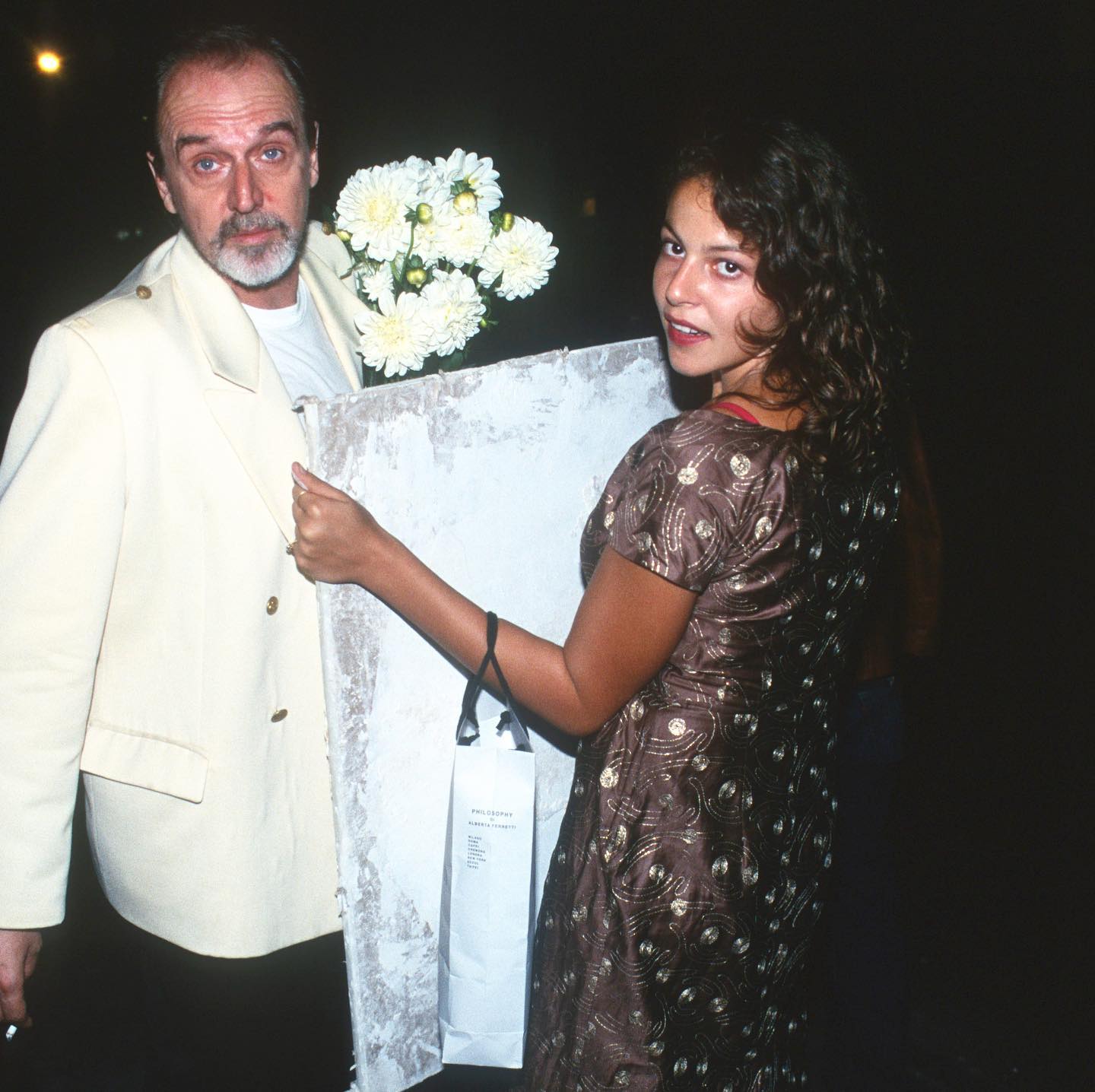
Lola Schnabel and Rene Ricard taken by Patrick McMullan (photograph courtesy of Lola Schnabel)
ME: Describe to me how you remember Jean-Michel.
PW:He was pretty mellow on the surface. He was stoned. I remember him drawing all the time. My friends and I would go to a bar on Ave. A., (The Betty Ford Clinic), most every night and hang late at night. I had a friend living upstairs, Jean-Michel was usually there, painting, drawing, getting high. He wouldn’t come down to the bar, but I would go upstairs when I felt like it, to see.
ME: What about Keith Haring?
PW: Keith was tagging, working, and throwing parties. He had an iconic show at Shafrazi’s on Greene Street in Soho. As we arrived, Grace Jones was on top of a limousine, dancing naked, painted and adorned by Keith. We went wild. Keith was so switched on.
ME: The one common thread between these guys was the breaking of barriers. Nothing they ever did resembled anything that had been done before.
PW: It was such an experimental time. Expressing ourselves, gay, straight, from all cultures and backgrounds. We used any form we felt like, out all night at the clubs, and importantly, style.

Pamela Willoughby, Andrea Purcigliotti, Tony ‘Buzzcock’ Barber The Pearly Queens & Kings, Deitch Art Parade (photo courtesy of Pamela Willoughby)
ME: How did you learn about events?
PW: Word of mouth and clever invitations.
ME: What about work ?
PW: I had a trust fund, when it ran out I became a chef. I threw dinner parties at home in Malibu and cooked. In New York it was the only thing I could think of to make money. After a stint on Martha’s Vineyard, I looked up the best chefs in New York, and unequivocally decided on top chef Jonathan Waxman of Jams, uptown. I walked in, mustering up my courage to speak to the chef. They needed help so I started that night. I would have worked for free for that job. For fun, after work we would go out with his buddies, Larry Forgione, Hubert, and Wolfgang Puck. Anthony Bourdain sometimes. We dashed downtown to the Palladium, Chinese restaurants, everywhere.

James Chance of The Contortions (photograph by Marcia Resnick)
ME: Food, art, music: these were worlds that meshed with each other creating a culture of its own.
PW: Absolutely. After leaving Jams, I met Dana Flynn and Kurt who were opening a small joint in Hell’s Kitchen named Trixies. After a lot of thought – well, maybe 5 minutes – I became the first chef there. No liquor license, not enough money. It was put together madly and beautifully for a song and a dance. So much energy, starting with the unbelievable waitstaff. I was making birthday cakes for John Waters and Divine. Nightclub owners came before opening their clubs. The chefs came, and artists of course. We had an open kitchen in the back. I thought I’d be clever and put Penne a la Vodka on the menu to have a never-ending supply of vodka, which we would give to special friends – everyone – who hung around the kitchen, and that was funny.
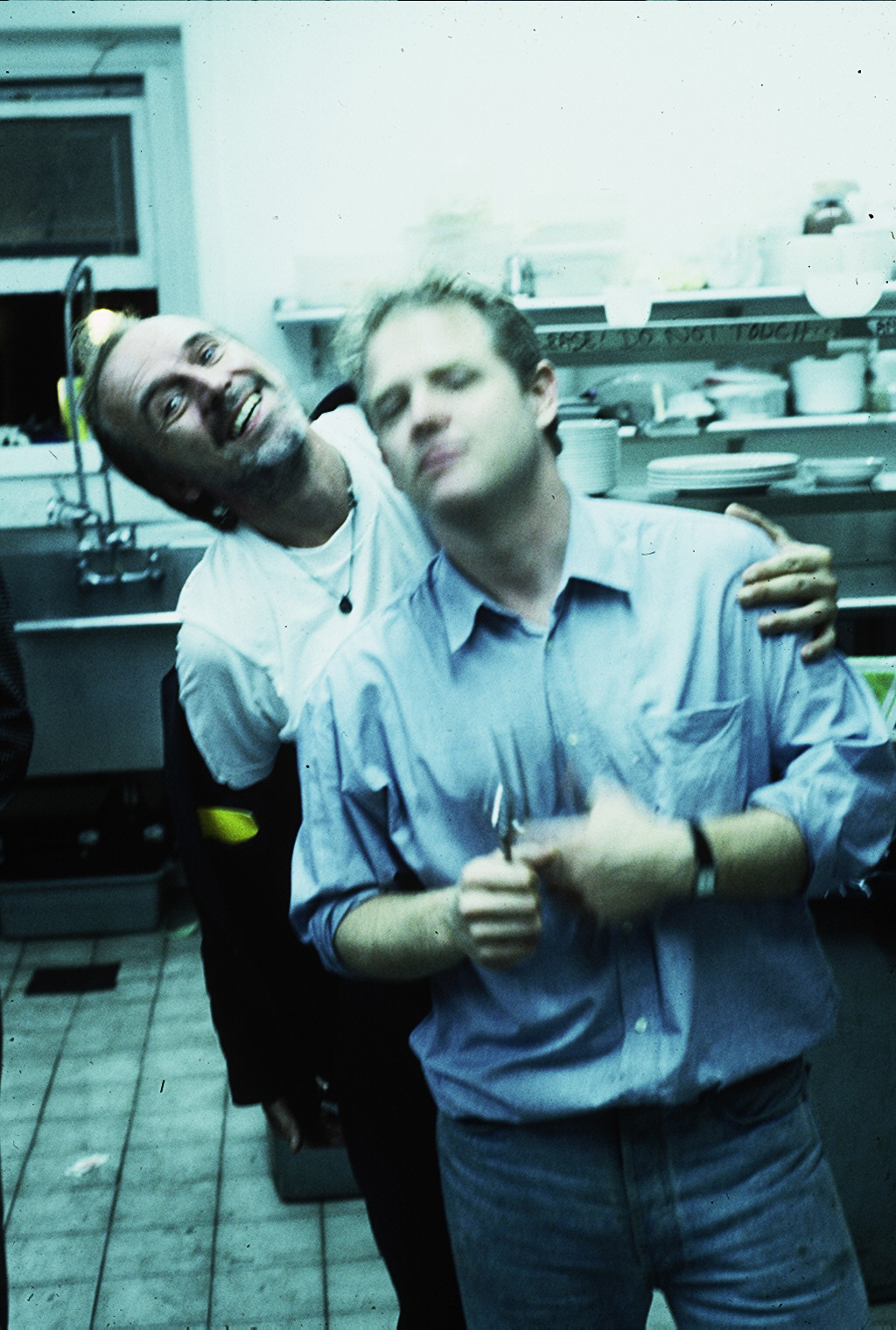
Rene Ricard and William Rand by Anthony Gaskin. 1990 Lucky Cheng kitchen NYC (from RENE by William Rand 2022 Osprey Press)
PW: Harry Connick Jr was the house piano player; we were friends from New Orleans. Harry played with Mr. Spoons who had spoons all over him. That was such a scene. The waitstaff picked a nightly dress theme: Hawaiian skirts and outrageous inspired costuming.
There were great people: Rick Rubin, Leigh Bowery, Rudolph, Zaldy, Madonna. Top hairstylists came so I never had to pay for my hair. LOVED that. Dana dancing on tables in bullet bras and the highest platforms.
ME: Why did you leave Trixies?
PW: We got discovered. Press was all over it and it just exploded; we had to get a doorman to control it. It was hard to manage the kitchen with too many interviews. One morning I missed my spot on Good Morning America because, of course, I was dancing all night with Kurt, and then, I couldn’t do it anymore.
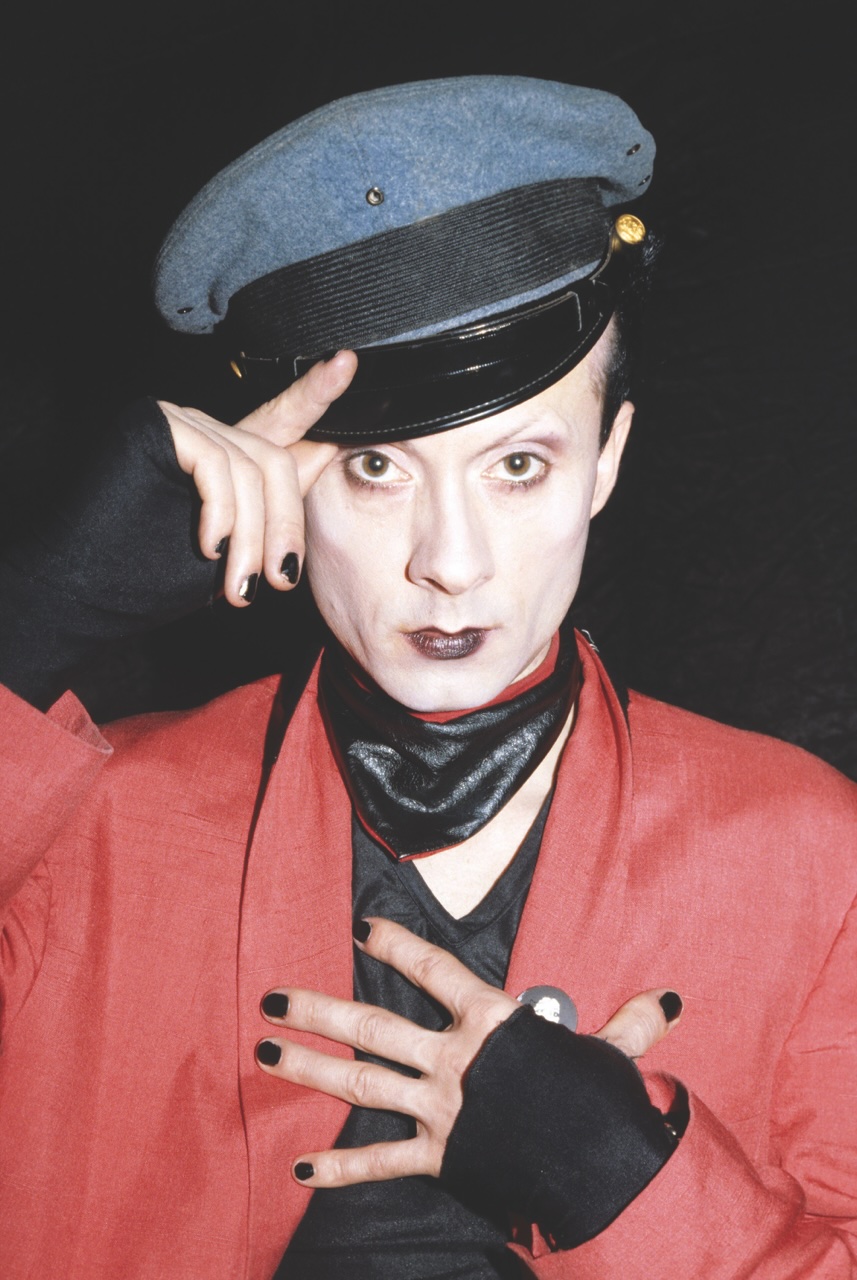
Klaus Nomi in New York (photograph by Marcia Resnick)
My other playing card was a possibility at M.K. I went to meet Rick, the chef there and he hired me to be his ‘other’ at night. I said goodbye to Trixie’s. M.K. was Eric and Jennifer Goode’s club, (after Area) which could be compared to the European clubs such as Bains-Douches in Paris. Goode had his art studio upstairs. Jennifer ran things. Eric’s art was shown throughout the club.
Ben Buchanan, the English photographer, chronicled the whole scene, a fusion society and art scene. Everyone was there.
ME: Would they hang with you in the kitchen?
PW: All the time. It had 18-foot ceilings and there were lots of parties for Matsuda, Comme des Garçons, and others. It was incredible who we would cook for: Harvey Fierstein dropping by from Broadway with a hello in the kitchen, John Lurie, Malcolm Forbes, Keith, Cookie Mueller — on and on. Mike Tyson arrived one night in his tricked out Lambo with a hot tub in the back.
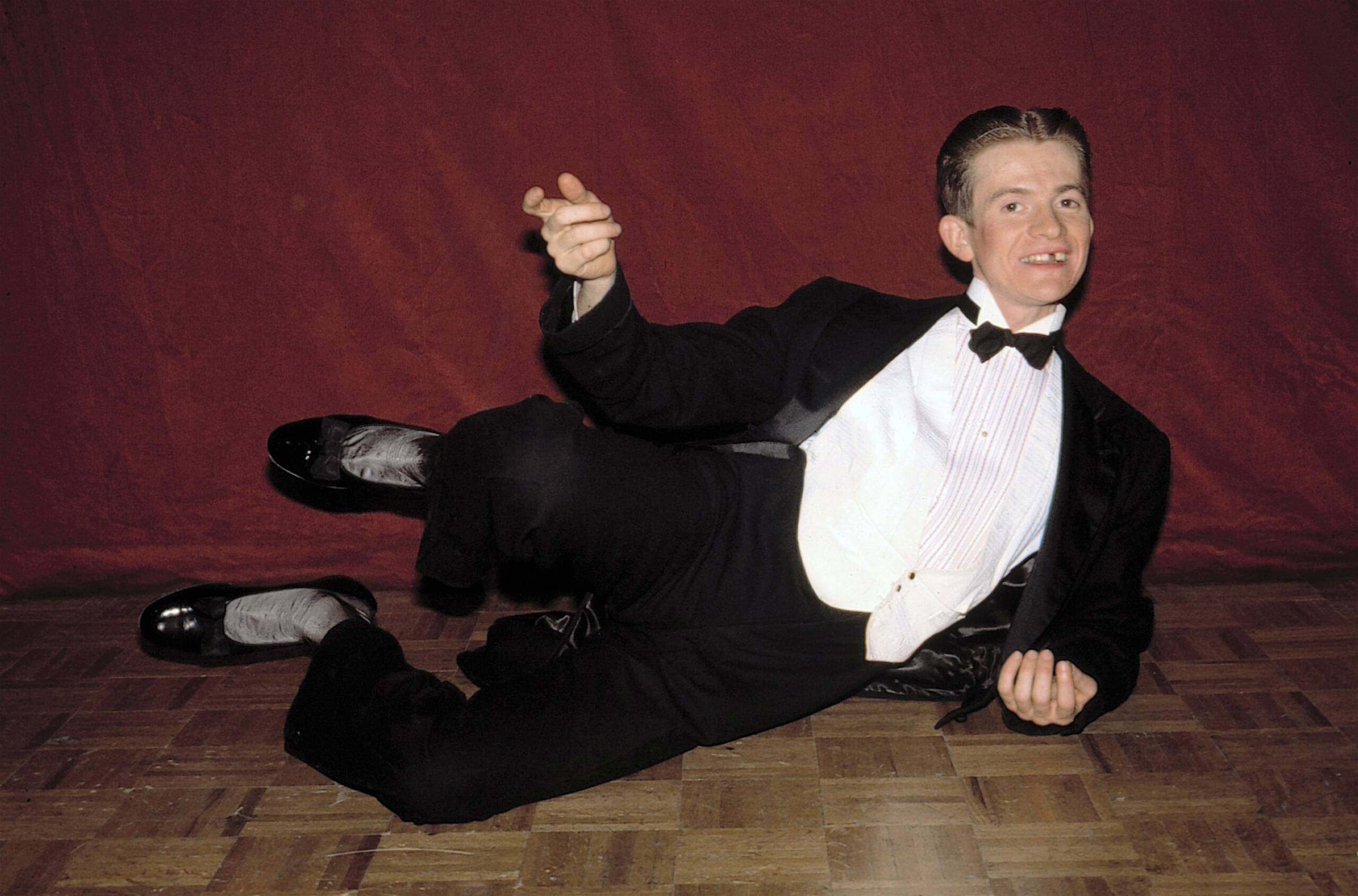
David McDermott in 1978 at the New Wave Vaudeville show at Irving Plaza, New York City (photograph by Marcia Resnick)
I remember beloved Cookie Mueller and Lady Kier being there that night, with Anita Sarko, Haoui Montaug, Tony Shafrazi, and Beverly Johnson. We all watched him waltz in, wearing a white mink coat with a very long train, walking through the club like a king. Everyone cleared the floor for him; he was ruling. The funniest was him being followed by every society person as he strolled about everywhere.
ME: What time would you generally get home?
PW: 5am.
One day, I came in and it looked like the whole of downtown royalty was there, all naked. It was M.K.’s Christmas card photoshoot, with George Plimpton, to boot. Keith Haring would often come in for kitchen visits, with presents for us and signed prints. Sadly, he knew he had a finite time left on this earth.
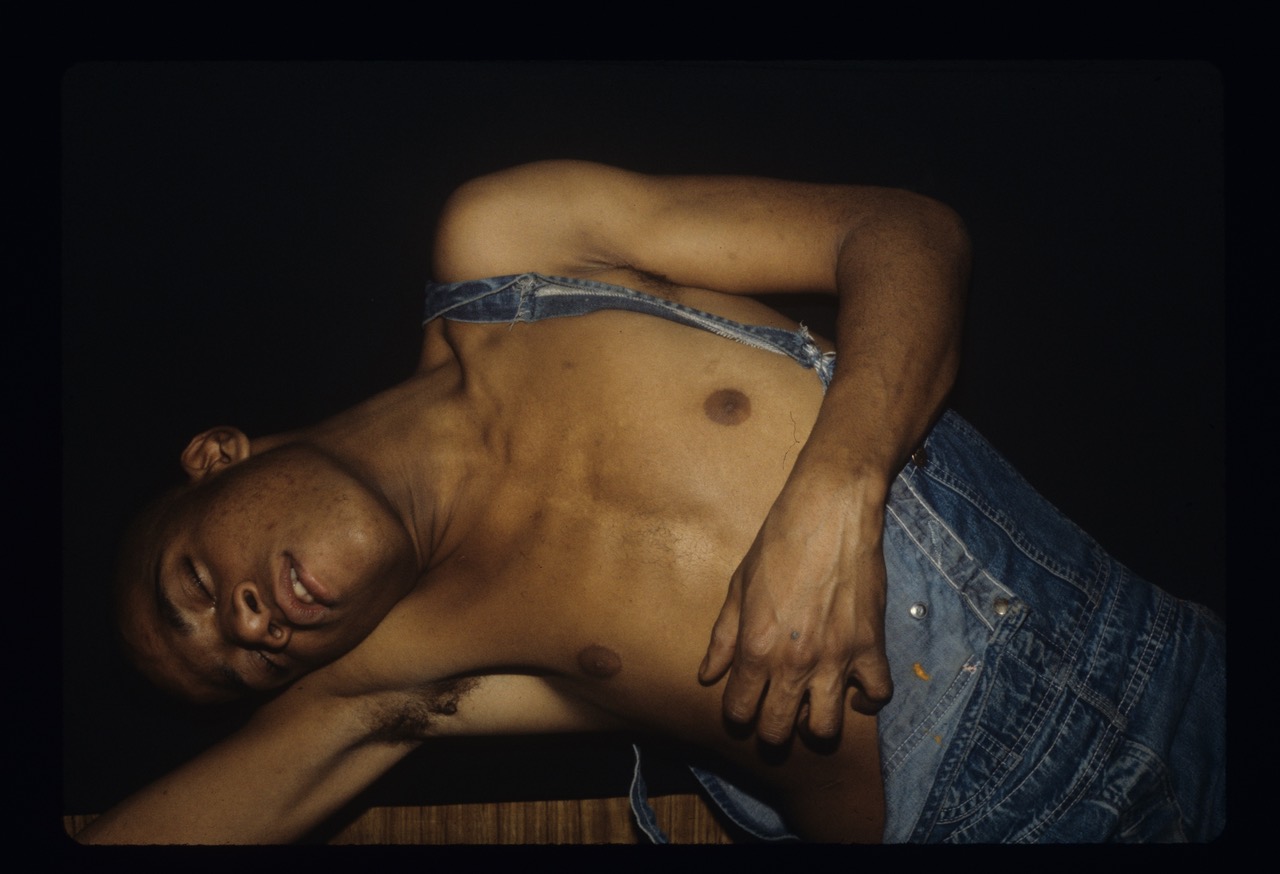
Jean-Michel Basquiat (photograph by Marcia Resnick)
ME: The early 90s signalled the beginning of the end of a great creative period in the cultural history of the city. Can you comment on how AIDS put an end to all things creative and to the party scene?
PW: It seemed like the job to be done was to become an activist. We were in shock because our friends were dying. When Leigh Bowery died, it was sadder than sad. Cookie, Hauoi Montaug, Keith, it kept on going. We all loved each other so much. It was emotional, and we were young.
Read more: An Interview with Marian Goodman Gallery
ME: I guess you could call it a sobering moment.
PW: Indeed. We had to fight for our rights under the Reagan Administration, who completely ignored AIDS. We were shocked seeing this unfolding in front of our very own eyes. Robert Mapplethorpe was a great loss.

Pat Place with a toy dragon (photograph by Marcia Resnick)
ME: So all this potential, all this unleashing of creative juices, just abruptly came to an end?
PW: Yes and no. Creativity always wins. I am an eternal optimist to this day.
ME: Was there a sense of guilt amongst the survivors?
PW: I don’t remember, exactly. The friends and activists I knew and know were angry. That was when the activism came into play and everybody went full on with it. Silence=Death was strong. There was no time to feel guilty in my opinion. There was just time to get on with it and try to help.
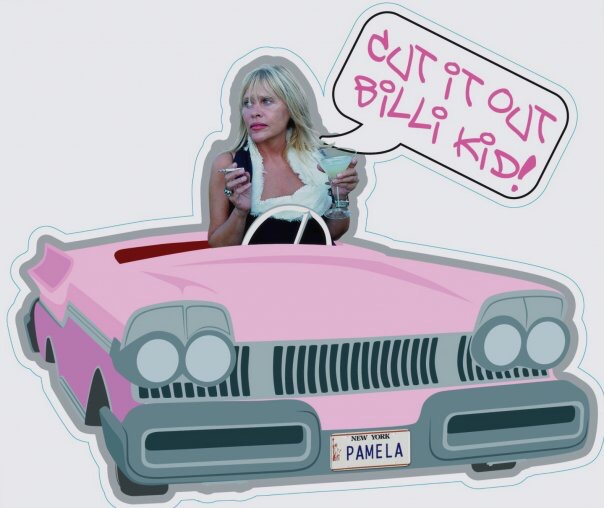
Pamela Willoughby by Billikidbrand
ME: And today? Where do you live and what are you up to?
PW: I have a place in the Springs NY, the artist enclave of East Hampton, where the light is brilliant, carrying the energy of every painter or sculptor who has worked and visited here.
I’m a curator and strategist with an art consultancy firm. I was asked to join the Arts Committee at LongHouse Reserve, helping a very special institution and sculpture garden.
It’s my very favourite place, now led by Carrie Rebora Barratt, formerly of the Metropolitan Museum and the New York Botanical Garden. The founder, Jack Lenor Larson, insisted that his garden, global collections, and programs would live on. Every July we hold a benefit gala with themes that are beyond imaginative, with inspiring honourees. In 2024, we honoured artists Kenny Scharf and Tony Bechara on a most spectacular night.

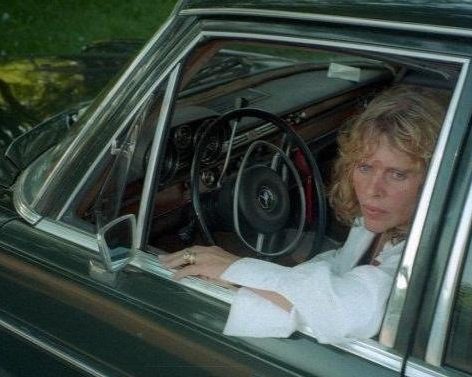





Recent Comments